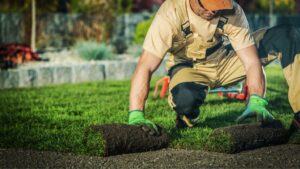All About Topsoil: Why You Need it for Your Landscaping!

If you’re planning a gardening, landscaping, or agricultural project, topsoil is an essential component you cannot overlook. This essential element to your planting project is rich in nutrients and organic matter that foster healthy plant growth and promote ecosystem balance. Whether you’re looking to revitalize your garden or start a landscaping project, understanding the importance of topsoil can help you make informed decisions.
At Bayshore Materials, we specialize in providing high-quality topsoil and topsoil delivery near me in Vallejo to ensure your project thrives. Read on to discover why topsoil matters and how to maximize its benefits.
What is Topsoil?
Topsoil is the outermost layer of soil, typically 2 to 8 inches deep. It’s a fertile layer brimming with nutrients, organic matter, and microorganisms that support plant life. Unlike deeper soil layers, which can be dense and nutrient-poor, topsoil has a balanced structure ideal for growing plants. Its composition varies by location but generally includes organic matter, minerals, beneficial microorganisms, air, and water.
Topsoil is often confused with compost. While there are similarities, the differences between topsoil and compost are important to know when planning your projects.
The Benefits of Topsoil
Using high-quality topsoil in your garden or landscape offers numerous benefits that extend beyond simple aesthetics.
Improves Soil Structure
Topsoil enhances soil texture, improving aeration and drainage in clay soils and adding bulk to sandy soils to retain moisture.
Increases Nutrient Content
Topsoil is a natural source of essential nutrients such as nitrogen, phosphorus, and potassium. These nutrients are vital for processes like photosynthesis, root development, and flowering.
Boosts Water Retention
The organic matter in topsoil acts like a sponge, retaining moisture for plants while preventing over-saturation. This is also an upside of using bark mulch.
Supports Beneficial Microorganisms
Topsoil teems with beneficial microorganisms that decompose organic matter, protect plants from disease, and release nutrients into the soil.
Prevents Erosion
Plant roots anchored in topsoil stabilize the soil, reducing the risk of erosion from wind and water.
Provides a Good Seedbed
Its fine texture and nutrient-rich composition make topsoil ideal for sowing seeds, ensuring better germination and growth.
Enhances Garden Aesthetics
Topsoil can level uneven areas and create a smooth, visually appealing garden bed.
How to Use Topsoil in Your Garden or Landscape
Keep in mind that different topsoil’s will have different benefits, so make sure you choose the right topsoil for your needs. Once you’ve got your topsoil, here’s how to get started:
Test Your Existing Soil
Before applying topsoil, test your garden soil to understand its pH, nutrient levels, and composition. This will help you choose the most compatible type of topsoil.
Choose the Right Topsoil
For vegetable gardens, opt for loamy topsoil rich in organic matter. For lawns or flower beds, use screened topsoil for a finer texture. Avoid overly sandy or clay-heavy topsoil, as they may hinder plant growth.
Prepare the Site
Clear weeds, rocks, and debris. Loosen the existing soil to integrate it with the new topsoil for improved water movement and root penetration.
Apply and Mix the Topsoil
Spread 2-4 inches of topsoil evenly over the prepared area. For larger projects or raised beds, consider applying a thicker layer. Mix the topsoil with the existing soil for better consistency.
Add Mulch
After you’ve put down your topsoil, it’s a good time to apply bark mulch. This layer of mulch over the topsoil helps retain moisture, suppress weeds, and add organic matter as it decomposes.
Water Thoroughly
Water the topsoil after application to help it settle and remove air pockets.
How to Maintain and Improve Topsoil Quality
With the right practices, you can help to ensure you get the most out of topsoil:
Add Organic Matter
Regularly enrich your topsoil with compost, manure, or leaf mulch. This helps maintain fertility, improves water retention, and supports microbial activity.
Reduce Soil Disturbance
Minimize soil disturbance through no-till gardening practices to preserve the soil structure and its natural ecosystem.
Use Cover Crops
Plant cover crops like clover or rye during off-seasons to protect topsoil from erosion and improve its nutrient content.
Manage Water Wisely
Avoid overwatering, which can lead to nutrient leaching, and underwatering, which stresses plants. Use efficient irrigation methods like drip systems.
Bayshore Materials: Your Topsoil Experts in Vallejo
At Bayshore Materials, we take pride in delivering high-quality topsoil for all your gardening and landscaping needs. Whether you’re improving the soil in a vegetable garden or creating a beautiful lawn, we’ve got you covered.
Transform your garden with nutrient-rich topsoil from Bayshore Materials. Contact us today or give us a call at 707-644-0859 to learn more about our products and services. Let us help you create the garden or landscape that you envision!
